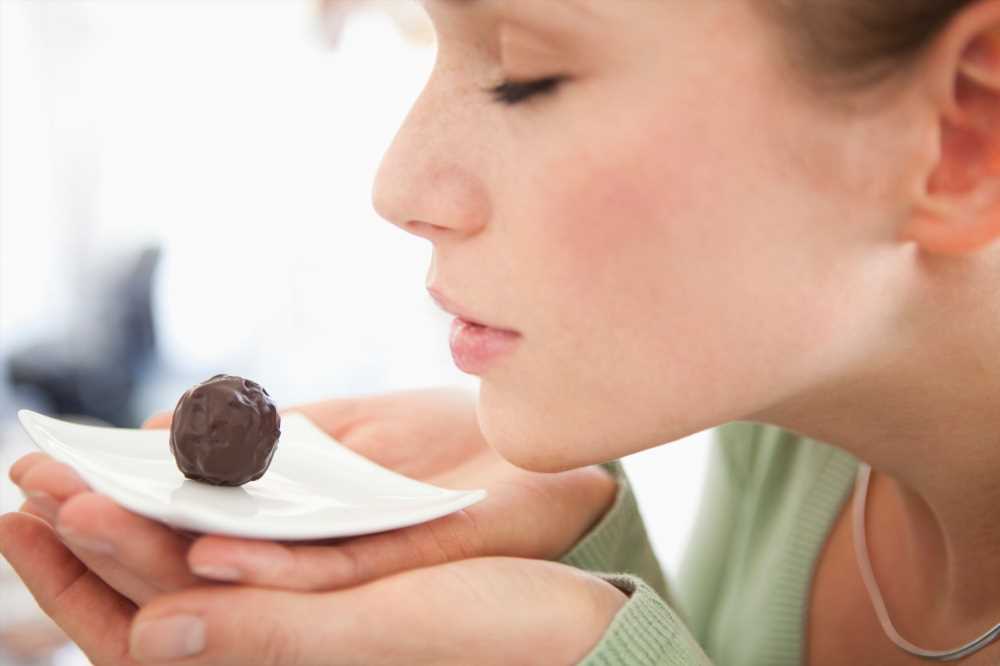With growing rates of obesity and non-communicable diseases worldwide, much concern is centered on encouraging people to choose healthy foods as part of a balanced and adequate diet.
A new paper published in the Food Quality and Preference Journal explores the role of sensory cues such as odors in promoting such healthy choices.
 Study: How sweet odors affect healthy food choice: An eye-tracking study. Image Credit: JuiceFlair/Shutterstock.com
Study: How sweet odors affect healthy food choice: An eye-tracking study. Image Credit: JuiceFlair/Shutterstock.com
Introduction
Healthy food choices depend on various personal and environmental cues and traditions and on the availability, accessibility, and affordability of foods.
Energy-dense foods are always more available and accessible than healthy foods that have reduced levels of salt, sugar, and fat.
This raises the question of whether people could be primed to choose healthy foods using sensory environmental cues. For instance, a more visually appealing nutritional chart prompts people to choose more nutritious meals.
Odors often reveal information about a food’s nutrient content and flavor beforehand. Moreover, people tend to choose and eat greater quantities of congruent foods when exposed to their odors in advance, such as fruity desserts after smelling pear odors and rich desserts following a chocolate odor.
Importantly, such odors need to be subtle enough that their impact is unconscious; conscious perception of a food odor tends to be less effective regarding behavioral choices, as it competes with other conscious thoughts.
Nonetheless, sweet snacks always get more visual attention and are chosen more frequently, irrespective of previous odor exposures.
The study
The current study sought to assess the impact of sweet food odors on the subsequent food choices made by the participants. The relationship of these odors to visual attention to different foods was a focus area in this experiment.
Of the 53 study participants, all were exposed to two sweet food odors. The first pertained to odors associated with healthy foods, namely apple and honey melon. The second category was smells identified as unhealthy foods like chocolate or caramel.
Each participant underwent two sessions. Each individual was exposed to these odors for 10 minutes, each associated with one healthy and one unhealthy food. Following this, each had to choose one of eight foods, the aim being to assess possible associations between healthy food odors and healthy food choices.
What did the study show?
Surprisingly, odor exposure had no obvious effect on the choice of healthy or unhealthy foods. Overall, healthy foods tended to be chosen more often, regardless of prior odor exposure.
Those who smelt healthy food odors showed visual fixation on foods from either category for 0.11 seconds longer. Conversely, no differences were witnessed in the fixation duration on congruent vs. incongruent foods.
After healthy odor exposure, the first food product fixation was also longer, whether healthy or unhealthy.
When the number of fixations was measured, healthy odors were linked to a 0.15 times higher number of visual fixations to food products than unhealthy odors. Here again, there was no effect on congruency.
As expected, visual fixation was associated with food choices. People who fixed on a food product for a greater duration were more than 1.6 times more likely to choose it, while those who looked at it more often were 53% more likely to choose it.
What are the implications?
Odors are supposed to activate thoughts about the corresponding foods and thus prompt congruent food choices. However, this was not observed in the current study, in which participants tended to choose healthy foods more often, regardless of which sweet food odor they were first exposed to.
This study did not choose foods with flavors congruent with the previously perceived odor more frequently. This could be due to the extremely low concentration of the odor, which escaped perception altogether.
Despite this, it could be that a certain duration of exposure is required to produce a specific effect on food choices. The ten-minute exposure period may have been too long to prime the participant. However, an earlier study showed that up to 20 minutes periods were compatible with odor-dependent eating behavioral changes.
Further research will be required to identify such limits so that environmental odors can be better manipulated to help encourage healthy food choices. This is especially important since most such studies have not been well replicated, and meta-analyses fail to show any meaningful effect of smell on food choices.
However, the increased visual fixation following healthy odor exposure may indicate a deeper cognitive processing of visual food information, with less conscious decision-making.
The participants were perhaps more consciously aware of their decision-making when in a ‘healthy state of mind’ due to the healthy odor exposure.”
On the other hand, the high educational status of the participants, mostly from a university with strong health and food preferences, may have influenced their attitudes toward food choices.
Future research is required in order to establish which concepts of foods (healthy or sensory) can be primed by ambient odors to better understand how and under which circumstances odors can impact food choice behaviors.”
-
Yang, X., Zandstra, E. and Boesveldt, S. (2023) "How sweet odors affect healthy food choice: An eye-tracking study", Food Quality and Preference, p. 104922. doi: 10.1016/j.foodqual.2023.104922. https://www.sciencedirect.com/science/article/abs/pii/S0950329323001167.
Posted in: Medical Science News | Medical Research News | Medical Condition News | Miscellaneous News
Tags: Chocolate, Diet, Food, Honey, Obesity, Pear, Research

Written by
Dr. Liji Thomas
Dr. Liji Thomas is an OB-GYN, who graduated from the Government Medical College, University of Calicut, Kerala, in 2001. Liji practiced as a full-time consultant in obstetrics/gynecology in a private hospital for a few years following her graduation. She has counseled hundreds of patients facing issues from pregnancy-related problems and infertility, and has been in charge of over 2,000 deliveries, striving always to achieve a normal delivery rather than operative.
Source: Read Full Article
